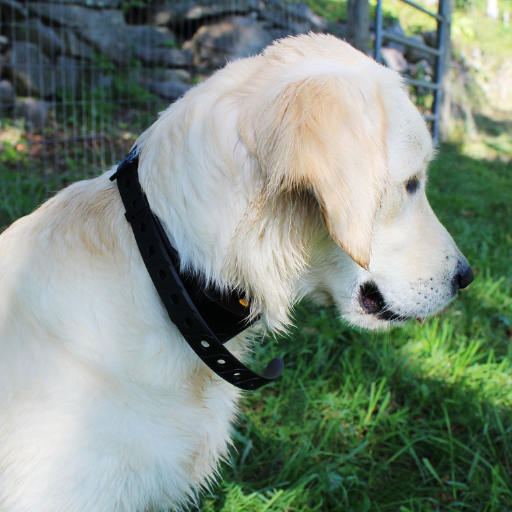Introduction: A Controversial Topic in Canine Care
In the vast sphere of dog care and training, few topics spark as much debate as the use of shock collars. These training tools, providing electric shocks to correct behavior, come with a multitude of concerns—one of the most alarming being the possibility of inducing seizures in dogs. This article delves deep into this subject, exploring the potential link between shock collars and seizures, and equipping you, the dedicated pet owner, with vital information to make informed decisions for your canine companion.

The Controversy Surrounding Shock Collars
Shock collars, also known as e-collars or electronic collars, are devices designed to curb undesired behavior in dogs. However, beneath their seemingly practical use in training scenarios like boundary control or off-leash conduct, lurks a contentious debate. Critics argue that shock collars can cause physical pain, stress, and fear in dogs, leading to potential physical and psychological harm.
Seizures in Dogs: A Brief Overview
Before we delve into the possible relationship between shock collars and seizures, it’s essential to understand what seizures in dogs entail. They represent a neurological disorder resulting from an abrupt, uncontrolled surge of electrical activity in the brain. This overactivity can lead to anything from mild changes in behavior to severe convulsions. Numerous factors can trigger seizures, such as epilepsy, exposure to toxins, or underlying health issues. Diagnosis involves a careful evaluation of clinical signs, medical history, and in some cases, more advanced diagnostic tests.
Shock Collars and Seizures: Is There a Connection
While there is a paucity of scientific studies explicitly linking shock collar used to seizures in dogs, the possibility can’t be entirely ruled out. The stress and fear that shock collars can induce might, hypothetically, trigger a seizure in susceptible dogs. A few pet owners and veterinarians have reported cases where the onset of seizures coincided with the use of shock collars, although these remain anecdotal.
A Deeper Dive Into the Potential Hazards of Shock Collars
The potential risks of shock collars go beyond seizures. For instance, burns or tissue damage can result from improper or prolonged use of a shock collar. Psychological effects are also a major concern, with dogs potentially developing fear, stress, or anxiety-related behaviors. Some studies even suggest a link between the use of punitive training methods and aggression in dogs.
Positive Alternatives to Shock Collars
For dog owners considering alternatives, numerous safe and effective training methods exist. Positive reinforcement techniques, rewarding your dog for good behavior, can foster a stronger bond between you and your dog while encouraging desired behavior. Non-shocking devices, such as ultrasonic devices and vibration collars, can also provide a less harmful alternative.
Valuable Insights From Veterinary and Animal Behavior Experts
Veterinarians and animal behaviorists often express caution when it comes to shock collar use. The American Veterinary Society of Animal Behavior (AVSAB) advocates for positive reinforcement methods over punishment-based ones, stating: “Punishment (e.g., shock collars) can lead to aggression and other behavioral problems.” It’s highly recommended that dog owners concerned about seizures consult their vet before deciding on a training method.
Considerations Before Choosing a Training Method
Deciding on a training method for your dog involves more than a simple choice of tools or techniques. Your dog’s breed, age, health status, and temperament are crucial factors to consider. For instance, a highly energetic breed might require different training approaches compared to a more laid-back breed. Puppies, senior dogs, and dogs with health issues might require gentler methods. As every dog is unique, consulting with a professional dog trainer or veterinarian can be beneficial in determining the most suitable training method for your furry companion.
Detailed Tips for Positive Reinforcement Techniques
Positive reinforcement techniques can work wonders when applied correctly. Here’s a brief guide:
- Identify the Reward: Find out what your dog loves. It could be a special treat, a favorite toy, or simply a belly rub.
- Prompt and Reward: Give your dog a command. When your dog follows it correctly, promptly give the reward. This helps the dog associate the behavior with the reward.
- Repeat: Consistency is key. Repeat the commands regularly and reward your dog each time they perform the command correctly.
- Gradually Decrease Rewards: As your dog gets better at the command, start to decrease the frequency of the rewards. Your dog will eventually perform the command even without a reward every time.
Warning Signs of Stress or Discomfort in Dogs
Recognizing signs of stress or discomfort in your dog can ensure your pet’s training is progressing without causing harm. Watch out for excessive panting, drooling, avoidance behaviors (like turning away or hiding), changes in appetite, or sudden unexplained aggression. These signs could indicate that your dog is not comfortable with the training method being used.
Conclusion: A Humane Approach to Dog Training
Our exploration into the potential link between shock collars and seizures in dogs underlines the importance of making informed, humane choices for our pets. Prioritizing your dog’s physical and emotional well-being by choosing safer training methods could make a world of difference in your furry friend’s life.
Your Participation Matters If this information was helpful to you, consider sharing it with your fellow dog owners. Your thoughts, comments, and personal experiences are invaluable—feel free to share them below. For more articles on dog health and training, remember to subscribe and stay informed!

Doctor of Veterinary Medicine (D.V.M.) at Nation Taiwan University,Master of Science (M.S.) in Biomedical Engineering at National Taiwan University of Science and Technology




